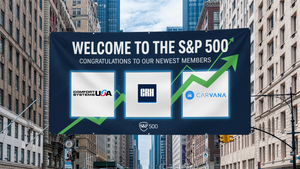
Social network Snapchat (NYSE: SNAP) reported Q1 CY2025 results topping the market’s revenue expectations, with sales up 14.1% year on year to $1.36 billion. Its non-GAAP profit of $0.07 per share was significantly above analysts’ consensus estimates.
Is now the time to buy SNAP? Find out in our full research report (it’s free).
Snap (SNAP) Q1 CY2025 Highlights:
- Revenue: $1.36 billion vs analyst estimates of $1.35 billion (14.1% year-on-year growth, 1.3% beat)
- Adjusted EPS: $0.07 vs analyst estimates of $0.04 (significant beat)
- Adjusted EBITDA: $108.4 million vs analyst estimates of $64.77 million (8% margin, 67.4% beat)
- Operating Margin: -14.2%, up from -27.9% in the same quarter last year
- Free Cash Flow Margin: 8.4%, down from 11.7% in the previous quarter
- Daily Active Users: 460 million, up 38 million year on year
- Market Capitalization: $15.39 billion
StockStory’s Take
Snap’s first quarter results reflected ongoing progress in its direct response advertising business and steady momentum from subscription products like Snapchat+. Management attributed revenue growth to improvements in advertising platform automation, expanding small and medium-sized business (SMB) advertiser participation, and increased time spent on content. CEO Evan Spiegel emphasized enhancements to the visual communication core of Snapchat, highlighting the rollout of new features in messaging and augmented reality (AR), as well as the refinement of the app experience for both new and long-time users.
Looking ahead, management stated that macroeconomic uncertainty is making forecasting more difficult, with CFO Derek Andersen noting, "the macro is changing quickly, and the path forward isn’t entirely clear." Expense discipline and targeted investments in AI and machine learning remain top priorities. The leadership team expects improvements in ad platform efficiency and continued user engagement to support positive free cash flow and progress toward GAAP profitability, but cautioned that near-term growth could be affected by external factors such as changes to trade exemptions and advertiser sentiment.
Key Insights from Management’s Remarks
Snap’s management focused on the combination of product innovation and disciplined execution that shaped first quarter performance and set priorities for the remainder of the year.
- Direct Response Advertising Expansion: Snap’s direct response (DR) ad business saw notable growth, with DR now contributing 75% of total advertising revenue for the first time. Management credited ongoing machine learning upgrades and broader adoption of goal-based bidding (an approach where ads are optimized for specific outcomes) as key drivers.
- SMB Advertiser Growth: The company reported a 60% increase in active advertisers year-over-year, led by small and medium-sized businesses. Initiatives like Snap Promote lowered barriers for these advertisers, while ongoing efforts target greater participation from mid-sized customers to drive future revenue.
- Subscription Revenue Momentum: Snapchat+ subscriptions reached nearly 15 million, up 59% from the prior year. Management highlighted that this expansion diversifies revenue streams and reduces reliance on advertising, contributing to overall business resilience.
- Product and Experience Improvements: The team made changes to the app’s interface, introducing a refined five-tab layout and features that encourage creative expression and easier content discovery. These adjustments were informed by user feedback and are designed to boost engagement, particularly among newer or more casual users.
- Augmented Reality and AI Integration: Snap continued investing in AR with new features for its Spectacles smart glasses and AR developer platform, including global positioning and advanced hand tracking. The company also expanded use of AI tools like My AI, which saw a 55% increase in daily active users in the U.S., and implemented faster, more responsive machine learning models for content personalization.
Drivers of Future Performance
Management’s outlook centers on continued investments in ad platform innovation and user engagement, while acknowledging external risks could create volatility in near-term growth.
- Ad Platform Enhancements: Ongoing improvements in automation, machine learning, and goal-based bidding are expected to deliver better returns for advertisers and expand inventory, which management believes will help drive higher revenue conversion and advertiser retention.
- Subscription and Revenue Diversification: Growth in Snapchat+ subscriptions and continued expansion of the SMB advertiser base are seen as critical to reducing reliance on large brand advertisers, providing a more stable revenue foundation through varying market conditions.
- Macro and Regulatory Headwinds: The company highlighted uncertainty related to macroeconomic trends and regulatory changes, such as modifications to trade exemptions, as factors that could impact advertising demand and growth trajectory in the coming quarters.
Top Analyst Questions
- Tom Champion (Piper Sandler): Asked about the acceleration in North American revenue and the impact of changes to the app design. Management attributed growth to improved direct response ad performance and product enhancements for new and loyal users, noting broader gains from the revised five-tab layout.
- Ross Sandler (Barclays): Pressed for details on macro headwinds and expense reductions. CFO Derek Andersen explained, “the macro is changing quickly,” and that modest expense reductions reflect alignment with realized revenue growth and ongoing investment discipline.
- Rich Greenfield (LightShed Partners): Sought clarity on steps needed to achieve 20%+ growth in direct response advertising. CEO Evan Spiegel cited improvements to ad platform technology, rollout of new bidding objectives, and a unified go-to-market approach as enablers for higher growth.
- Mark Shmulik (Bernstein): Queried about My AI’s differentiation and engagement trends, especially in North America. Management pointed to the focus on visual communication and integration of AI in AR as unique aspects, and highlighted positive trends in content engagement and creator activity.
- Justin Post (Bank of America): Asked if Snap remains demand-constrained and how the company plans to unlock further ad demand. Management acknowledged ongoing efforts to increase ad inventory, especially through sponsored snaps, and the importance of bringing more advanced bidding options to new advertising placements.
Catalysts in Upcoming Quarters
Looking toward the next few quarters, the StockStory team will be watching (1) whether enhancements to the ad platform and new product formats translate into accelerating advertiser spend and higher conversion rates, (2) continued growth and retention in Snapchat+ subscriptions as a sign of successful revenue diversification, and (3) progress in user engagement across both mature and emerging markets. The impact of macroeconomic shifts and regulatory updates on advertiser demand will also be key to monitoring Snap’s execution against its strategic priorities.
Snap currently trades at a forward EV/EBITDA ratio of 23.9×. Should you double down or take your chips? See for yourself in our free research report.
High-Quality Stocks for All Market Conditions
The market surged in 2024 and reached record highs after Donald Trump’s presidential victory in November, but questions about new economic policies are adding much uncertainty for 2025.
While the crowd speculates what might happen next, we’re homing in on the companies that can succeed regardless of the political or macroeconomic environment. Put yourself in the driver’s seat and build a durable portfolio by checking out our Top 6 Stocks for this week. This is a curated list of our High Quality stocks that have generated a market-beating return of 176% over the last five years.
Stocks that made our list in 2020 include now familiar names such as Nvidia (+1,545% between March 2020 and March 2025) as well as under-the-radar businesses like the once-small-cap company Exlservice (+354% five-year return). Find your next big winner with StockStory today.





